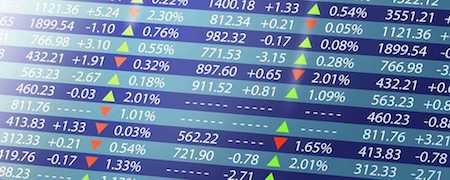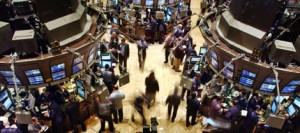


Good August jobs number cements Federal Reserve interest rate increase in September (and probably December)
The U.S. economy added a net 201,000 jobs in August. That was above the projection of 187,000 from economists surveyed by Briefing.com. Government statisticians revised the July job gains to 170,000 from 153,000. The official unemployment rate remained at 3.9%. So why...
This market’s volatility puzzle–it’s as if investors and traders don’t think risk is climbing in the general market
Facebook (FB) falls almost 20%. Netflix (NFLX) tumbles 14%. Twitter (TWTR) is down 21% on earnings. Intel (INTC) finished today down 9%. And yet the CBOE Volatility Index (VIX), which measures the price that traders are willing to pay to hedge risk VIX, the so-called...
This market indicator is signaling trouble ahead–in 2020 (Strange: That’s the same year the CBO estimates the annual U.S. budget deficit will hit $1 trillion.)
Earlier this evening I wrote about the unusual inversion in the VIX Fear Index which had futures for the CBOE S&P 500 Volatility Index (VIX) priced to show more risk in the near future than in the far future. Normally the price curve runs in the other direction since the near future is usually more predictable than the far future. Near future and far future are relative terms in the financial markets. In this case we aren’t talking about the difference between short-term 3 month Treasury bills and 10-year Treasury notes. The VIX curve stretches out from future contracts that expire in a couple of weeks to contracts that run for 40 days or more. But a market indicator that does focus on a longer time horizon is also indicating trouble ahead for 2019 or more likely 2020.
So how volatile is this stock market? There’s more fear out there than the usual measures suggest
Last week gave us a decent read on how volatile this U.S. stock market is. And how fear and uncertainty rule this market. Let me use the Freeport McMoRan Copper & Gold (FCX) May 18, 2018 puts with a strike price of $18 that I added to my Volatility Portfolio on April 3 as an example.

Volatility could be extra volatile as VIX options expire tomorrow
Investors and traders don’t have just the volatility from the CPI inflation report tomorrow to worry about. An unexpectedly strong or weak inflation report could send stocks and bonds soaring or tumbling. There’s also the expiration of options on the CBOE S&P 500 Volatility Index (VIX) tomorrow.

A constructive day but the short-term key remains CPI inflation on Wednesday
The Standard & Poor’s 500 and the Dow Jones Industrial Average both finished in the green today, up 1.39% and 1.70%, respectively, after having held off a bout of selling around 3:46 p.m. New York time. Volatility also made progress on returning to normal.

Forget about stability–bond fears driving stocks lower again
Here we go again. After a pause that raised hopes that the slide in U.S. stocks was over, today the sell off has resumed. As of 3:30 p.m. New York time, the S&P 500 stock index was down 2.59%, or 60.3 points, to 2612.

Notes You Need for February 6: VIX, Bunge, rig count, Alphabet, ISM Services stronger
In my daily trawling through the market I come upon lots of tidbits of knowledge that I think are important to investors but that don’t justify a full post. I’ve decided to start compiling these notes here each day in a kind of running mini blog that I’m calling Notes You Need. A representative post resembles this entry from today: “10:40 a.m.: Earlier rumors have advanced to reports of talks between Archer-Daniels-Midland and Bunge (BG) about an acquisition of the latter company. Bloomberg is reporting that the deal could be agreed as early as this week. Soybean giant Bunge is a member of my long-term 50 Stocks Portfolio. The shares are up 4.33% today.”

I never like to see this kind of big intraday reversal–but it’s not that serious YET
U.S. stocks came racing out of the gates on strength in overseas markets with the Dow Jones Industrial Average trading at 26,000–283 points higher than the Friday close at one point during the day. Then came the plunge. As indexes gave back all their gains and then some. The Dow closed 10.3 points lower at 25,793. The Standard & Poor’s 500 traded above 2,800 for the first time and then fell to close down 0.4% for the day. The NASDAQ Composite also finished lower on the day. This kind of intraday reversal is never a sign of market health.

Trick or trend: Volatility rising without any net move in the market
The problem for the market isn’t that there are signs of a big move to the downside. Instead it’s the absence of clear signs about either direction at all that has the market worried–especially as we head into a short holiday week with really only two full days of trading.

Trick or Trend: Where’s the volatility? Try the bond market
Last week’s drop has again led to the question “So where’s the volatility?” After all it’s not like there aren’t dangers in this world that might lead a trader to bid up the price of protecting against those dangers. It’s certainly not in the VIX, which looks for volatility in the S&P 500 future. But there’s actually plenty out there. It’s just all in the Treasury futures market where traders are hedging their bets on 10-year and 30-year Treasuries big time. The implied volatility in those futures markets has soared in the last couple of weeks.



